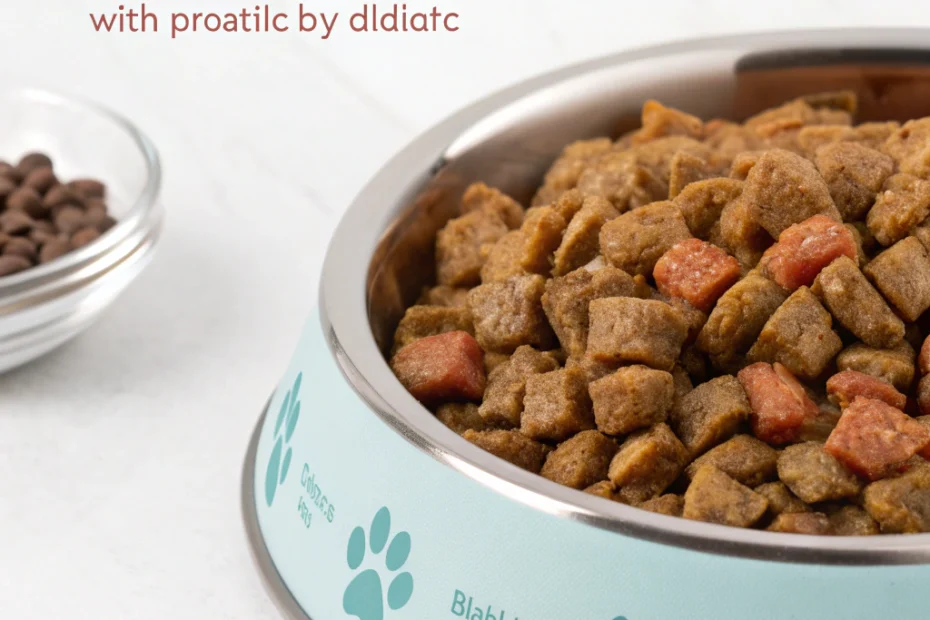At-a-Glance
Diabetes in cats is a condition that requires careful management, and diet plays a crucial role. Cat food for diabetic cats may help regulate blood sugar levels and support overall health. Understanding the nutritional needs of a diabetic cat can guide you in choosing the right food and ensuring your feline friend maintains a healthy lifestyle.
How to Choose
Choosing the right cat food for diabetic cats involves considering several factors. Look for foods that are high in protein and low in carbohydrates, as these can help manage blood sugar levels. It’s also important to check for ingredients that are easily digestible and provide balanced nutrition.
Protein Content
High-quality protein is essential for diabetic cats. It helps maintain muscle mass and supports overall health. Look for foods where the primary ingredient is a named meat source, such as chicken or fish.
Carbohydrate Levels
Low carbohydrate content is crucial. Carbohydrates can cause spikes in blood sugar levels, so selecting a food with minimal carbs can be beneficial.
Fiber and Other Ingredients
Fiber can support digestive health and may help with glucose regulation. Additionally, ensure the food contains essential vitamins and minerals to support your cat’s overall well-being.
Safety & Setup
When transitioning your cat to a new diet, do so gradually to avoid digestive upset. Mix the new food with the old food over a week, gradually increasing the amount of new food. Monitor your cat’s response to the new diet and consult your veterinarian if you notice any adverse reactions.
Monitoring Health
Regular veterinary check-ups are essential for diabetic cats. Keep track of your cat’s weight, appetite, and energy levels, and report any changes to your vet.
Food Storage
Store cat food in a cool, dry place to maintain its freshness and nutritional value. Ensure the packaging is sealed tightly after each use.
Core Pillars
The core pillars of managing a diabetic cat’s diet include consistency, quality, and monitoring. Consistency in feeding times and portion sizes can help regulate blood sugar levels. High-quality ingredients ensure your cat receives the necessary nutrients. Regular monitoring helps catch any health changes early.
Placement & Environment Tips
Place your cat’s food and water bowls in a quiet, comfortable area where your cat feels safe. This can encourage regular eating habits. Ensure fresh water is always available, as diabetic cats may have increased thirst.
Feeding Schedule
Establish a regular feeding schedule to help manage your cat’s blood sugar levels. Consistent meal times can aid in maintaining stable glucose levels.
Comparison with Alternatives
When considering alternatives to traditional cat food for diabetic cats, you may explore homemade diets or prescription diets. Homemade diets can be tailored to your cat’s specific needs but require careful planning to ensure nutritional balance. Prescription diets are formulated to meet the needs of diabetic cats and are commonly recommended by veterinarians.
Homemade Diets
Homemade diets offer control over ingredients but require guidance from a veterinarian to ensure they meet all nutritional needs.
Prescription Diets
Prescription diets are specifically designed for diabetic cats and are often recommended for their balanced nutrition and ease of use.
FAQs
What should I look for in cat food for diabetic cats? Look for high protein, low carbohydrate content, and balanced nutrition.
Can I feed my diabetic cat regular cat food? Regular cat food may not meet the specific needs of a diabetic cat. It’s best to choose food formulated for diabetes management.
How often should I feed my diabetic cat? Establish a consistent feeding schedule, typically two to three times a day, as advised by your veterinarian.
What to Do Next
After understanding the basics of cat food for diabetic cats, consult your veterinarian to discuss your cat’s specific dietary needs. They can provide personalized recommendations and help you create a feeding plan that supports your cat’s health. Regular monitoring and adjustments may be necessary to ensure your cat’s well-being.
Disclaimer: Always consult your veterinarian for personalized advice regarding your cat’s health.
